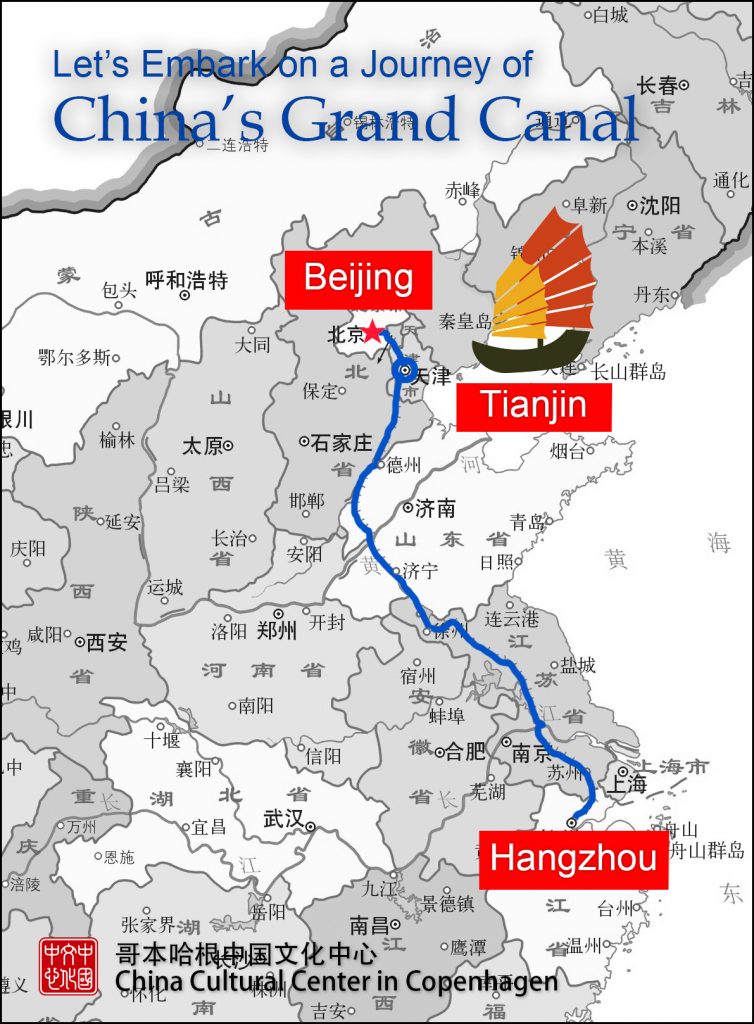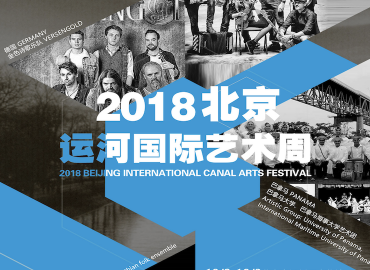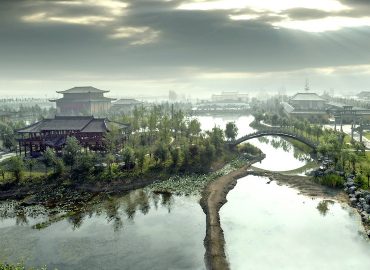Tianjin is a famous historical and cultural city, where canal culture and marine culture work together, and one of the birthplaces of northern culture and art. It is known as the “cradle of drama” and the “hometown of folk-art forms”. Tianjin boasts plentiful intangible cultural heritage. More than 30 items have been listed as representative national intangible cultural heritage. Tianjin is the center of Matsu (sea goddess) culture in northern China, and the “Huanghui” ceremony that worships Matsu has been as a folk custom in Tianjin for hundreds of years.
Tianjin boasts abundant natural tourism resources and humanistic resources that reflect modem history and civilizations, integrating the western with the Chinese, the past with the present. In 1999, Tianjin was selected as one of the first “Excellent Tourism Cities of China”. A series of distinct tourism brands have been created in Tianjin, such as modern culture tours, urban expo tours, Haihe River landscape tours, coastal leisure tours, mountain scenic attractions tours, and tourism expos.

The historical and cultural tourism resources represented by the Wudadao Tourist Area make Tianjin the best choice for the world to understand modern China. The 72-km Haihe River presents a unique waterway scenery. The tour along the Haihe River has become a characteristic brand of Tianjin tourism. The coastal tourist area has unique tourism resources such as the international cruise ship home port and the aircraft carrier theme park. It is a pilot zone for the development of China’s cruise tourism industry. The Binhai Library, located in Tianjin Binhai Cultural Center, was named one of the “top 100 places in the world” by Time magazine.
The National Maritime Museum, known as the “Forbidden City of the Sea”, was opened in 2019. In Jizhou District, there is the national AAAAA-class tourist attraction – Mountain Panshan, as well as Huangyaguan Great Wall, Dule Temple, and other places of interest. With its rare ancient coastal relics and unique reed marsh wetland ecosystem, Qilihai Wetland Nature Reserve in Ninghe District has attracted numerous tourists. Tianjin boasts a wealth of folk culture tourism resources. The Shijia courtyard is one of the best preserved and largest residential buildings of the Qing Dynasty (1644-1912) in northern China. Yangliuqing Ancient Town, one of the “four famous towns” in Chinese history, has won the title of “China’s famous town of cultural heritage”. Yangliuqing Woodblock New Year Painting was included in China’s first list of national intangible cultural heritage, ranking first in the category of the fine arts.
[DANISH]
Tianjin er en berømt historisk og kulturel by, hvor kanalkultur og havkultur er smeltet sammen, og en af fødestederne for det nordlige Kinas kultur og kunst. Det er kendt som ”dramatikkens vugge” og “folkekunstens hjemby”. Tianjin er rig på immateriel kulturarv. Mere end 30 genstande er blevet udvalgt og inkluderet i den repræsentative nationale immaterielle kulturarvsliste. Tianjin er centrum for Matsu (havgudinde) kultur i det nordlige Kina, og “Huanghui” ceremonien, der tilbeder Matsu, har været en folkeskik i Tianjin i hundreder af år.
Tianjin er også rig på naturlige turisme- og menneskelige ressourcer, der afspejler moderne historie og civilisationer, integrerer det vestlige med det kinesiske, og en blanding af det gamle og det moderne. I 1999 blev Tianjin valgt som en af de første “fremragende turismebyer i Kina”. En række forskellige turistoplevelser er således blevet oprettet i Tianjin, såsom moderne kulturture, byudstillingsture, Haihe-flod landskabsture, fritidsture ved kysten, bjerg og naturskønne ture og turismeudstillinger.
De historiske og kulturelle turismeressourcer repræsenteret af Wudadao Tourist Area gør Tianjin til det bedste valg for verden til at forstå det moderne Kina. Den 72 km lange Haihe-flod har dannet et unikt landskab af vandvejen. Turen langs Haihe-floden er blevet et karakteristisk mærke for turisme i Tianjin. Det kystnære turistområde har unikke turismeressourcer såsom International Cruise Home Port og Aircraft Carrier Theme Park. Det er et perfekt område for udviklingen af Kinas krydstogtturismeindustri. Binhai-biblioteket, der ligger i Tianjin Binhai kulturcenter, blev kåret som et af de “top 100 steder i verden” af TIME.
National Museet for Søfart, kendt som “Havets Forbudte By”, blev åbnet i 2019. I Jizhou distriktet findes den nationale turistattraktion i AAAAA-klasse – Panshan-Bjerget, samt Den Kinesiske Mur ved Huangyaguan, Dule-Templet og andre steder. Med sine sjældne ældgamle kystrelikvier og unikke vådområde-økosystem har Qilihai Wetland Nature Reserve i Ninghe-distriktet tiltrukket adskillige turister. Derudover har Tianjin også et væld af folkekultur-turismeressourcer. Shijia-Gården er en af de bedst bevarede og største boligbygninger fra Qing-dynastiet (1644-1912) i det nordlige Kina. Yangliuqing Ancient Town, en af de “fire berømte byer” i kinesisk historie, har vundet titlen som “Kinas berømte by med kulturarv”. Yangliuqing Træblok Nytårsmaleri blev medtaget på Kinas første liste over national immateriel kulturarv og rangeret som den første i kunst-kategorien.





